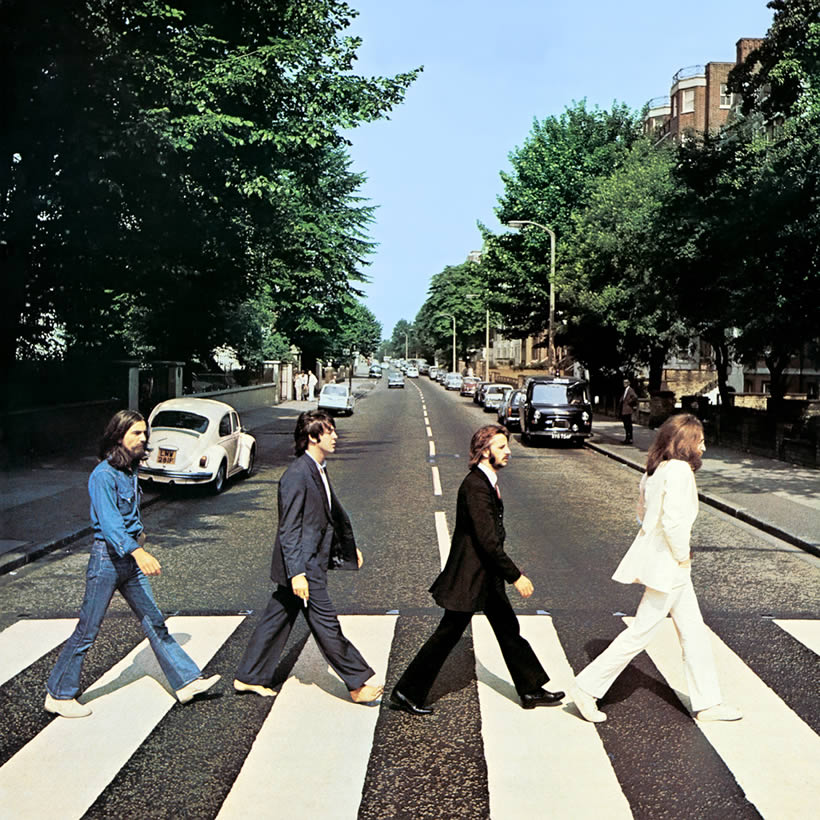On August 8, 1969, on a street in north-west London and almost directly outside a celebrated recording studio, one of the most famous ever album covers was shot.
Photographer Iain MacMillan took the image that would adorn the cover of the brilliant new record named after the street where he stood, Abbey Road. The zebra crossing, almost exactly in front of the studio where The Beatles had created the vast majority of their body of work, was about to become one of the most recognized sites in London.
Before the shoot began, MacMillan, a friend of John Lennon and Yoko Ono’s, had taken Paul McCartney’s initial sketch idea of the potential cover image and added detail of exactly how the famous quartet might look on the crossing. The street sign of Abbey Road that adorned the back cover of the album was taken by MacMillan on a junction with Alexandra Road that no longer exists.
Linda McCartney was also on hand to take some extra shots, before traffic was stopped by a solitary policeman and MacMillan got on his stepladder to take six images of the group crossing the road. Perhaps the four most famous men in the world walked crossed the road three times. McCartney took the lead in choosing the fifth of the transparencies to be used, partly because it was the only one that showed the group walking in exact time together. In 2012, one of the five outtakes sold at auction for £16,000.
What else did The Beatles do that day?
That afternoon, The Beatles and George Martin were inside Abbey Road, rather than outside, to resume work in a session for the upcoming album, recording “Ending,” which would become “The End.” The studio time was booked for 2.30pm, so as Mark Lewisohn reported in his Complete Beatles Recording Sessions, to kill time after the photo session, Paul took John back to his Cavendish Avenue house, George Harrison went with Mal Evans to London Zoo, and Ringo Starr went shopping. The Abbey Road album would be released seven weeks after the photo shoot, as The Beatles’ recording story came towards an end.
When did Abbey Road come out?
On September 26, 1969 Abbey Road, the group’s eleventh studio recording, was released. Upon its original appearance, it didn’t receive universal critical acclaim. William Mann of The Times said it “will be called gimmicky by people who want a record to sound exactly like a live performance.” Rolling Stone called it “complicated instead of complex.” Nik Cohn of the New York Times found the medley on side two to be their “most impressive music” since Rubber Soul, yet, “individually,” the album’s songs were “nothing special.”
Reviewers always suffer the constraint of having to pronounce on things in a relative instant and today this is often regarded as The Beatles’ finest album, a sustained body of varied brilliance. This was rock music as opposed to pop music, in the definition of the day, and in part its complexity was down to the fact that it was recorded on an 8-track machine, where previously The Beatles had used a 4-track machine at Abbey Road.
The album was also the first and only Beatles record to be entirely recorded through a solid state transistor mixing desk, the TG Mk I, as opposed to earlier thermionic valve based desks. The TG console also allowed for better eight-track multitrack recording, helping The Beatles to be able to overdub more easily. Engineer Geoff Emerick recalls the TG desk used to record the album had individual limiters and compressors on each audio channel and noted the overall sound was “softer” than the earlier valve desks.
Does the Abbey Road zebra crossing still exist?
Go to Abbey Road on any day, summer or winter, spring or autumn and there are always people trying to have their photograph taken while walking on the famous zebra crossing. Often, there’s quite a crowd. The Abbey Road Studios website even features a live webcam of the present-day scene.
Buy or stream the 50th anniversary editions of Abbey Road.
The Beatles ABBEY ROAD Anniversary Editions – Unboxing
Click to load video
Listen to the best of The Beatles on Apple Music and Spotify.



